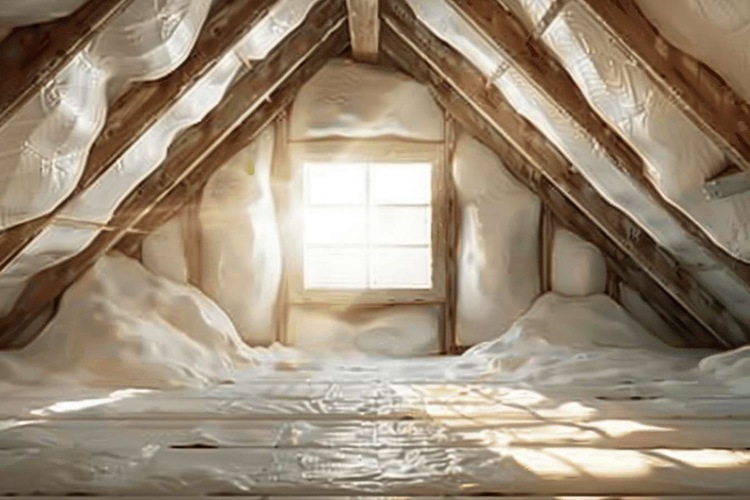Reimagining Attics: The New Frontier of Functional Luxury
Tucked away beneath sloping roofs, attics have long been relegated to storage spaces or forgotten corners of our homes. But a revolutionary trend is sweeping through interior design circles, transforming these overlooked areas into stunning, multifunctional living spaces that blend luxury with practicality. This shift is not just about reclaiming square footage; it's a testament to our evolving perception of home and the ingenious ways we're adapting to modern living demands.

One of the key drivers behind this trend is the increasing value placed on every square inch of our homes. As urban areas become more densely populated and real estate prices continue to soar, maximizing existing space has become crucial. Attics offer a unique opportunity to expand living areas without the need for costly additions or moving to a larger property.
Embracing Architectural Challenges
The distinctive features of attics – sloped ceilings, dormer windows, and often irregular shapes – once seen as limitations, are now celebrated as design opportunities. Innovative architects and interior designers are using these elements to create visually striking and highly functional spaces.
For instance, sloped ceilings are being utilized to create cozy reading nooks or built-in storage solutions. Dormer windows, with their charming profiles, are becoming focal points for seating areas or workspaces, bathing these once-dark spaces in natural light. The unconventional layouts of attics are inspiring custom furniture designs and creative space-saving solutions that add character and uniqueness to homes.
Luxury in the Eaves: High-End Attic Conversions
The concept of luxury has found its way into attic design, with homeowners investing in high-quality materials and bespoke features. We’re seeing attics transformed into lavish master bedroom suites complete with ensuite bathrooms, walk-in closets, and even private balconies. These spaces often incorporate premium finishes like hardwood flooring, custom millwork, and designer lighting fixtures.
In some cases, attics are being converted into indulgent spa-like retreats. Picture a freestanding bathtub positioned under a skylight, offering a view of the stars while you soak. Or imagine a fully equipped home gym with state-of-the-art equipment and floor-to-ceiling mirrors, all nestled under the rafters.
Multifunctional Marvels: Adapting to Modern Lifestyles
One of the most exciting aspects of the attic renovation trend is the emphasis on multifunctionality. As our homes increasingly need to accommodate work, leisure, and family life under one roof, attics are being designed with flexibility in mind.
We’re seeing attic spaces that seamlessly transition from home offices during the day to entertainment areas in the evening. Clever design solutions like Murphy beds, sliding partitions, and modular furniture systems allow these spaces to adapt to changing needs throughout the day or week.
Technological Integration: Smart Attics for the 21st Century
The integration of smart home technology is taking attic renovations to new heights. Automated climate control systems are being installed to maintain comfortable temperatures despite the challenges posed by attics’ proximity to the roof. Programmable skylights can be set to open and close, providing ventilation and temperature regulation.
Lighting plays a crucial role in these renovations, with smart LED systems that can be controlled via smartphone apps or voice commands. These systems often include the ability to adjust color temperature and intensity, creating the perfect ambiance for any time of day or activity.
Overcoming Practical Challenges
While the potential for attic renovations is exciting, there are practical considerations that need to be addressed. Issues like insulation, ventilation, and structural support are crucial in these projects. However, advancements in building materials and techniques are making it easier to overcome these challenges.
New insulation materials, for instance, offer superior thermal performance without taking up as much space as traditional options. This is particularly important in attics where every inch counts. Innovative ventilation systems are being designed specifically for attic spaces, ensuring proper air circulation and moisture control.
The Environmental Angle: Sustainability in Attic Design
As with many aspects of modern home design, sustainability is becoming a key consideration in attic renovations. By utilizing existing space rather than building new additions, these projects are inherently more environmentally friendly. Additionally, many homeowners are incorporating eco-friendly materials and energy-efficient systems into their attic designs.
Solar panels are being integrated into attic roofs, taking advantage of the optimal sun exposure these spaces often enjoy. Rainwater collection systems are being installed, with the collected water used for garden irrigation or other household needs.
The Future of Attic Design: What’s Next?
As this trend continues to evolve, we can expect to see even more innovative approaches to attic design. Virtual reality tools are already being used by some designers to help homeowners visualize potential attic transformations before any work begins. This technology allows for a more collaborative design process and helps in making informed decisions about layout and features.
Looking ahead, we might see attics becoming even more integrated with smart home ecosystems. Imagine an attic home office that automatically adjusts lighting, temperature, and even desk height based on your preferences and schedule.
The reimagining of attics represents a broader shift in how we think about our homes. It’s a movement that celebrates creativity, embraces challenges, and seeks to create spaces that are not just beautiful, but deeply personal and functional. As we continue to push the boundaries of what’s possible in home design, the humble attic may just become the most coveted space in the house.





